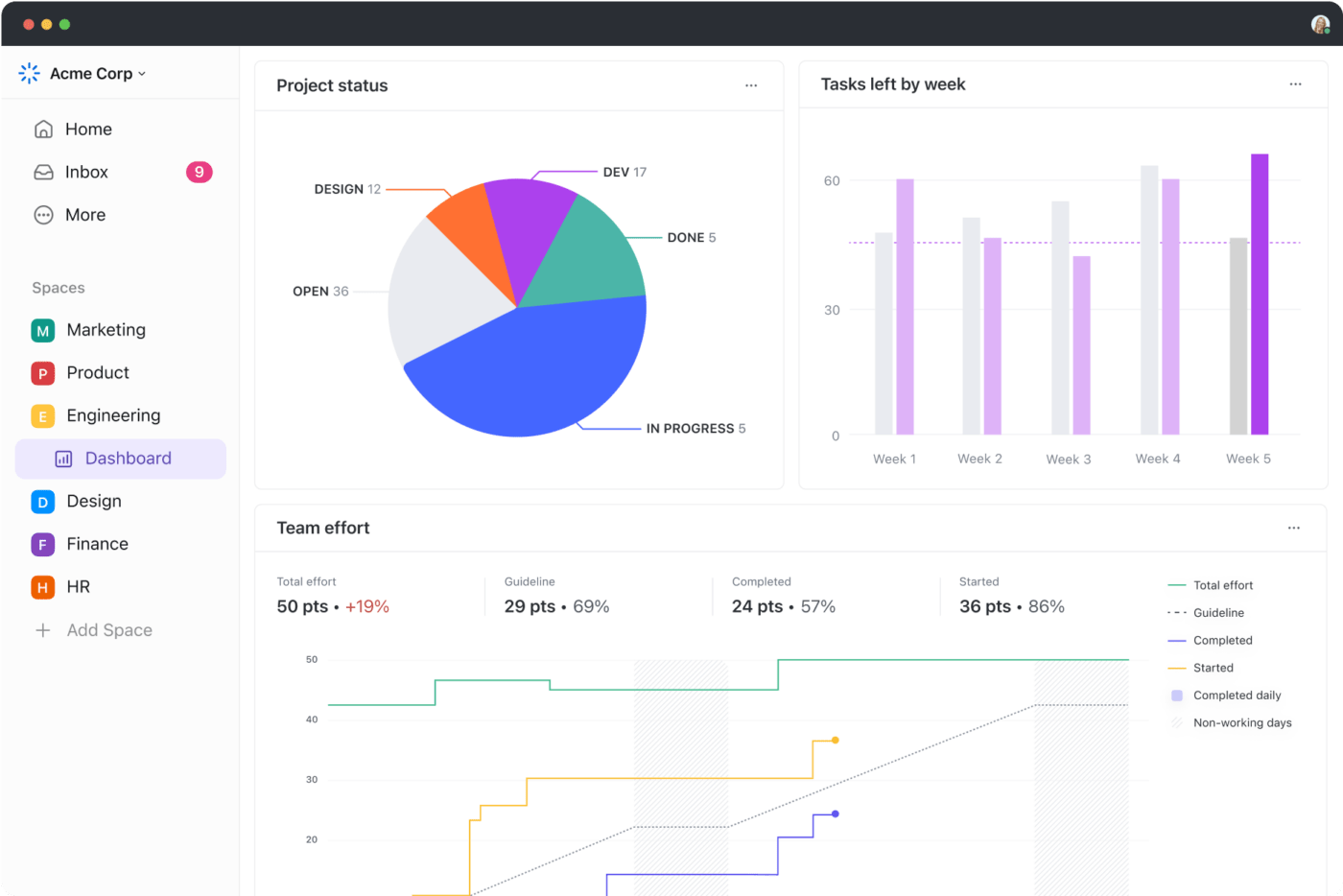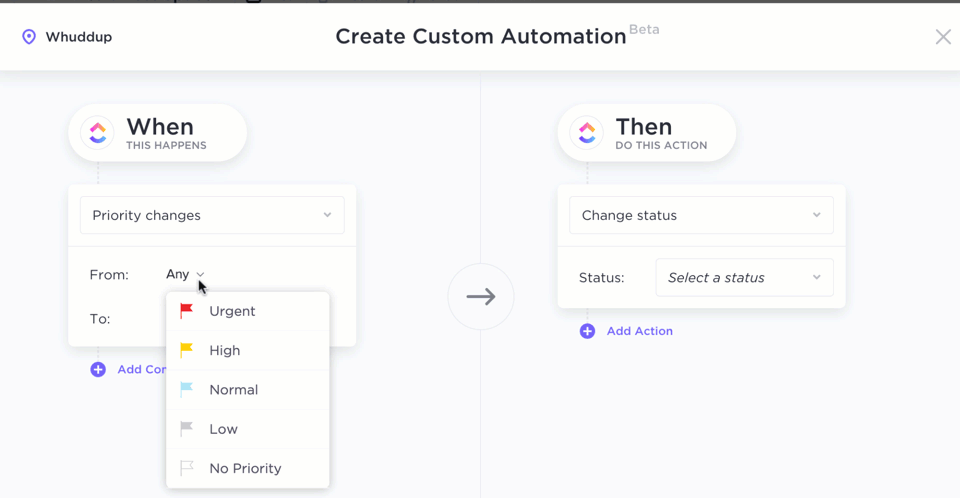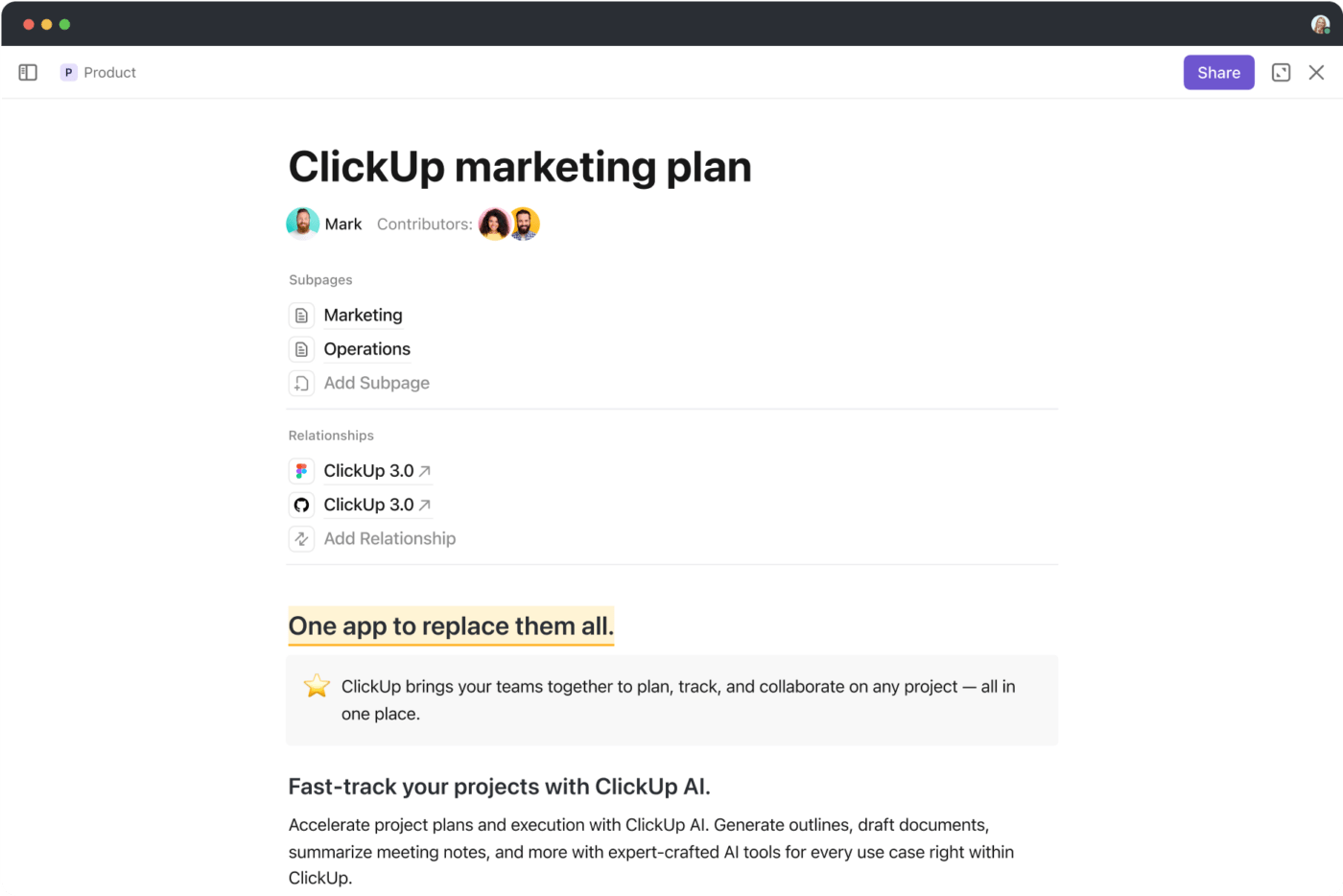What Is a Knowledge Gap and How to Address it?

Sorry, there were no results found for “”
Sorry, there were no results found for “”
Sorry, there were no results found for “”
Ever get stuck on a task and realize you’re missing a piece of the puzzle? That’s a knowledge gap at play.
Whether it’s a lack of expertise in a new field, outdated information in a rapidly changing industry, or simply skills you haven’t yet acquired, knowledge gaps can quietly hold you back.
This eventually leads to an achievement gap. The key isn’t just gathering more knowledge. It’s pinpointing and aligning the missing pieces with your organizational goals for meaningful progress.
In this piece, we’ll discuss knowledge gaps, why they occur, and how to tackle them head-on.
Simply put, a knowledge gap refers to the “Wait, what?” moment in someone’s brain.
It’s the space between what they know and what they need to know. This can happen with individuals, teams, or organizations and often highlights areas where additional learning, training, or research is required.
For example, your team has been using a new CRM system for months, but one employee still can’t track customer interactions. That’s a knowledge gap costing you sales.
Types of knowledge gaps:
🛠️ Skill gaps: Lacking specific skills needed for the task
📚 Information gaps: Missing key facts, relevant data, or research to make informed decisions
💼 Experience gaps: Knowing the theory but lacking real-world application
👀 Knowledge blind spots: Gaps you’re unaware of until they show up
🧩 Context gaps: Knowing the facts but missing the bigger picture
Knowledge gaps pop up for a bunch of reasons, and here are the big ones:
The good news? Knowledge gaps are like puzzles. You can spot them, solve them, and make everyone’s life easier.
The knowledge gap hypothesis says that people of different socioeconomic statuses, education levels, and cognitive capacities absorb information differently.
As a result, the gap in understanding between those with more resources and those with fewer continues to widen.
📌 Example: Say you’re rolling out a new CRM system for your sales team. Tech-savvy employees with previous CRM experience quickly figure out how to use it, customize it to their needs, and close deals more efficiently. However, team members who haven’t used a CRM before are stuck trying to log in and find their way around.
The result? Some employees are excelling, while others feel lost and frustrated.
Knowledge gaps in the workplace are like tiny cracks in a windshield. If you ignore them, they’ll grow until the whole thing shatters. Similarly, these gaps can cause major disruptions in learning and development if left unaddressed.
Imagine your team attending the same product knowledge training. While experienced employees quickly adopt the software, beginners struggle to understand basic functionalities.
🚨 Why it matters: Fast learners might get bored and tune out, while slower learners feel overwhelmed and left behind. Nobody wins.
When employees don’t have the foundational knowledge they need, frustration creeps in. They start doubting their abilities and may even shy away from future learning opportunities.
🚨 Why it matters: A demotivated employee is less likely to engage, grow, or bring their best to the table.
Employees who can’t absorb the material won’t apply it effectively, and that shiny new training program won’t deliver its promised results.
🚨 Why it matters: Missed ROI means wasted time, effort, and budget. Ouch.
Knowledge gaps often prevent employees from qualifying for promotions or new roles. A lack of career progression is a major driver of turnover.
🚨 Why it matters: Retaining talent is always easier than replacing it.
The fix? Address these gaps and skills issues in the workplace head-on, and you’ll turn those gaps into growth opportunities. 🚀
Let’s find out how.
Think about some of the fastest-growing startups, like Airbnb or Uber.
They’re always innovating and adapting to new challenges. Their teams are constantly learning, refining skills, and staying ahead of trends. This commitment to growth is what allows them to stay competitive and attract top talent.
It all starts with recognizing knowledge gaps in the workplace.
Here’s how you can nail it:
First, understand where your team stands. This means evaluating their technical, soft, and comprehension skills—what they know, what they’re good at, and what they still need to learn.
🔍 To do it effectively:
Take a step back and evaluate how your organization is currently storing, sharing, and utilizing knowledge. Can employees easily access the information they need? Is there a clear process for knowledge sharing?
🔍 To do it effectively:
These are the critical skills, processes, and insights your team needs to operate at its best. If there are missing pieces or overly complex sections, you’ve found a gap.
🔍 To do it effectively:
Conducting standardized tests is a powerful way to measure skills, knowledge levels, and areas for improvement.
These come in various forms, each suited to uncover different types of knowledge gaps in your team.
Types of standardized tests include:
🛠️ Skills assessments: Zero in on technical skills like software expertise, coding abilities, or product knowledge
📋 Knowledge quizzes: Short, focused quizzes on topics like industry trends, company policies, or product updates
🤝 Behavioral assessments: Measure communication, problem-solving, and teamwork skills with real-world application scenarios
🎯 Pre- and post-training tests: Track progress by testing employees before and after training
🎮 Simulation tests: Real-life scenarios in a controlled environment to see how employees tackle tasks or challenges
🏆 Certification exams: Formal tests for industry-specific skills, like project management, data analytics, or compliance standards
🔍 To do it effectively:
Procedural knowledge is the ‘how-to’ that makes everyday tasks click—how to log data into your CRM, process returns, or even follow safety protocols. Without it, employees are left guessing, leading to errors that slow everything down.
🔍 How to spot procedural gaps:
If you’re looking for a quicker, smarter way to spot procedural knowledge gaps, ClickUp can help.
Imagine your team is working on a complex project, but something’s off. Some tasks are getting delayed, and processes are taking longer than expected. With ClickUp Dashboards, you can:

When you need more insights, ClickUp Brain, ClickUp’s AI assistant, can dive even deeper, surfacing answers instantly.
So, if you’re unsure which tasks are being delayed due to knowledge gaps, just ask it to pull up the data. It scans your dashboards, highlights the problem areas, and saves you hours of digging. Instead of guessing, you get clear, actionable insights that make closing those knowledge gaps a breeze.
📌 Example prompts:
- Which procedures are taking longer than expected, and why?
- Pull up any tasks where steps are unclear or outdated according to the latest workflow
When you combine these strategies, you’ll have a full picture of what your audience needs to learn—and the perfect plan to teach them.
Closing gaps isn’t just about filling in the blanks. It’s about making sure the right knowledge is accessible and applied where it matters most.
Here’s how to get started:
The workplace is evolving rapidly, and so are the skills required to thrive. In fact, 73% of executives forecast the need for reskilling to keep pace with changing technologies and market demands.
That’s where adaptive learning ensures employees aren’t just catching up but staying ahead.
To make this work, build personalized learning programs that cater to each employee’s specific role and career goals. Whether through e-learning modules, one-on-one mentoring, or interactive workshops, make sure the content is flexible and adapts to their progress.
With ClickUp, you can create custom workflows that adjust based on an employee’s progress. For a sales team, workflows can begin with tracking leads and setting reminders. As they gain more experience, the workflow can evolve to include automating follow-ups, managing client relationships, and running performance reports.
Once you’ve perfected your workflow, ClickUp Automations takes over the heavy lifting. For example, when an employee completes a basic training module, ClickUp can automatically assign them the next level of training based on their progress. Or, if they pass an assessment, it can trigger an advanced task or course that suits their role.

Training should aim to build a culture of continuous learning. This keeps employees ready to tackle today’s challenges while staying ahead of tomorrow’s industry shifts.
🔍 A few ideas to get started:
As a knowledge base manager, building a centralized knowledge base is your team’s ultimate cheat sheet—step-by-step guides, FAQs, and process docs all in one place.
🚨 Why it matters:
However, transferring knowledge to your team can be challenging without the right tools.
ClickUp’s Knowledge Management Software is your one-stop solution.
Imagine you’re working on a product manual and need input from the marketing and engineering teams. With ClickUp Docs, you can write the manual and everyone can pitch in and update it live. No more waiting for approvals or back-and-forth emails

It also allows you to control who can view, edit, or comment on your docs. Plus, with version control, you can track changes and roll back to previous versions, keeping your docs up-to-date and accurate.
Further, ClickUp comes with pre-designed knowledge base templates to simplify the process.
For example, the ClickUp Knowledge Base Template lets you organize onboarding guides, troubleshooting steps, and role-specific SOPs in one place. Employees can easily search and access what they need, reducing downtime and confusion.
It includes various sections, like:
🌟 Bonus: Keep the knowledge base dynamic by assigning teams to update it regularly. This ensures everyone can gain knowledge quickly and easily as it evolves.
➡️ Read More: How to Build and Optimize Your AI Knowledge Base
When organizations focus on improving performance, they naturally identify areas where knowledge may be lacking.
Here’s how you can make it happen:
Training is the cornerstone of productivity. By focusing on structured education programs, you empower your team to address specific knowledge deficiencies and excel in their roles.
The ClickUp Training Rollout Plan Template helps you create a clear timeline, set goals, and track the progress of each training stage.
This template comes with:
HR professionals and team leaders can also track and manage employee skills and training progression in real time with the ClickUp Training Matrix Template.
It offers five different views to access and organize training information in a way that suits your needs:
Being a TL you have to monitor the work done by others and ClickUp makes it easier to manage the task, workload, etc. Also, helped me in presenting the performance of the team as well as the individual performance of the members.
Next, build on existing strengths and foster positive organizational behavior. A high-performing team thrives when individuals leverage their strengths, collaborate effectively, and contribute to a supportive workplace culture.
ClickUp Tasks helps you break down complex projects into manageable steps and assign tasks based on individual strengths.

This ensures everyone is working on tasks that match their strengths, while project managers can easily monitor overall progress to keep the team aligned and moving forward.
A learning-driven workplace with regular training, mentorship programs, and knowledge-sharing sessions:
📮ClickUp Insight: A typical knowledge worker has to connect with 6 people on average to get work done. This means reaching out to 6 core connections on a daily basis to gather essential context, align on priorities, and move projects forward.
The struggle is real—constant follow-ups, version confusion, and visibility black holes erode team productivity. A centralized platform like ClickUp, with Connected Search and AI Knowledge Manager, tackles this by making context instantly available at your fingertips.
Closing knowledge gaps is easier said than done. Barriers can stall progress. Here’s how to tackle these hurdles head-on:
The digital divide can make it tough for everyone to access the tools and tech needed for easy knowledge sharing, especially in diverse or dispersed teams.
Solutions:
✅ Use knowledge-sharing platforms to centralize resources and ensure everyone can access them seamlessly
✅ Use ClickUp’s collaboration features, such as real-time editing in Docs and comment threads on tasks, to keep remote and on-site teams connected
Gaps in procedural knowledge, like knowing how tasks are performed, or decisions are made, can cripple efficiency.
Solutions:
✅ Use gap analysis templates to identify where procedural knowledge is lacking and prioritize training needs
✅ Create step-by-step guides or flowcharts to provide clear instructions and streamline operations
Securing support for closing knowledge gaps can be difficult, especially when stakeholders are unsure of the value or when budget constraints exist.
Solutions:
✅ Get stakeholder buy-in by showcasing the ROI of closing these gaps, such as reduced errors and faster task execution
✅ Use ClickUp’s Dashboards to visually demonstrate workflow inefficiencies to stakeholders
Addressing knowledge gaps doesn’t have to be a headache.
With ClickUp, you get everything you need to keep your team aligned and moving forward. From managing training materials with ClickUp Docs to visualizing progress through Dashboards, ClickUp makes it easy to identify and close gaps in skills, experience, and knowledge flow.
You can also use ClickUp Brain to access key insights and the knowledge base templates to create a centralized hub for all your team’s information.
Want to streamline your knowledge management efforts? Sign up for ClickUp today! 🙌
© 2025 ClickUp